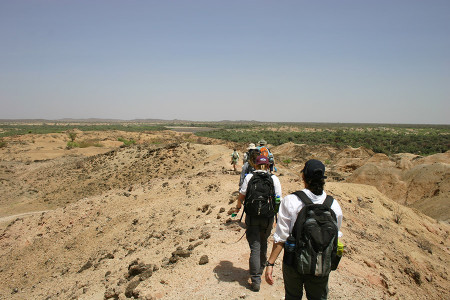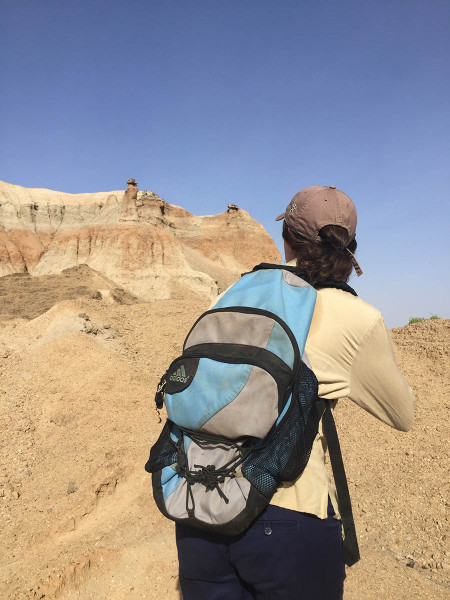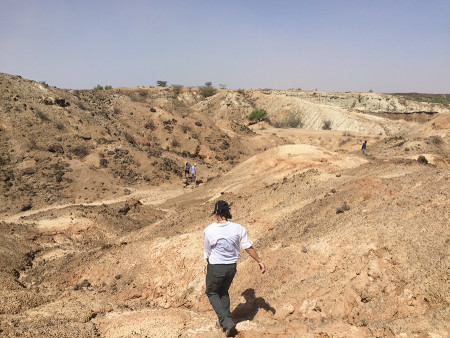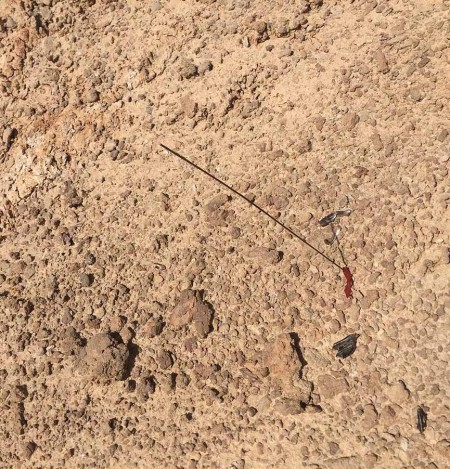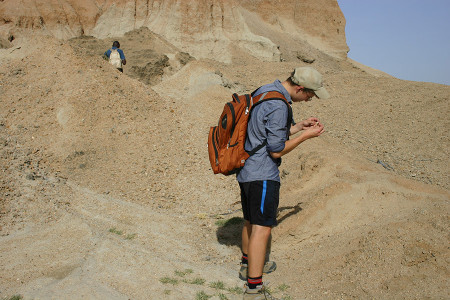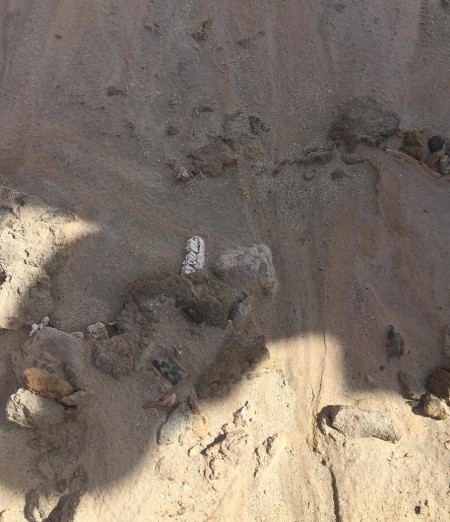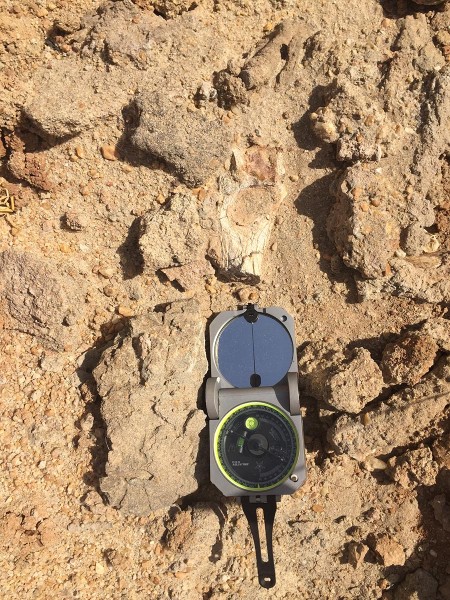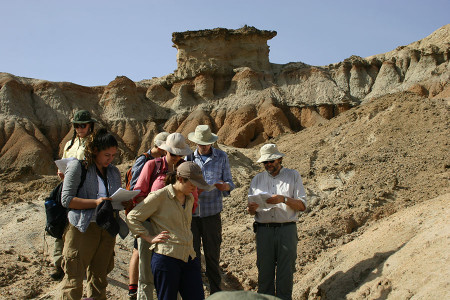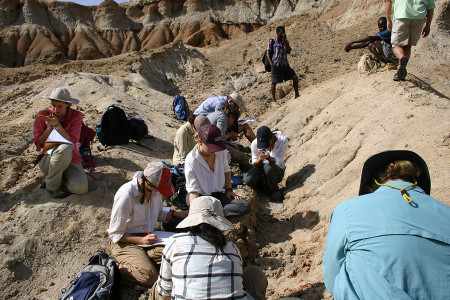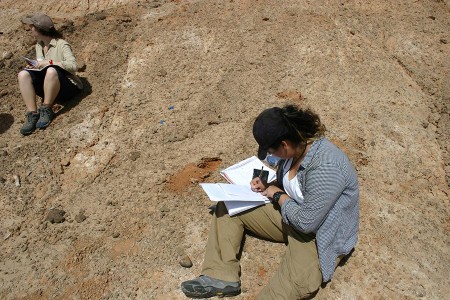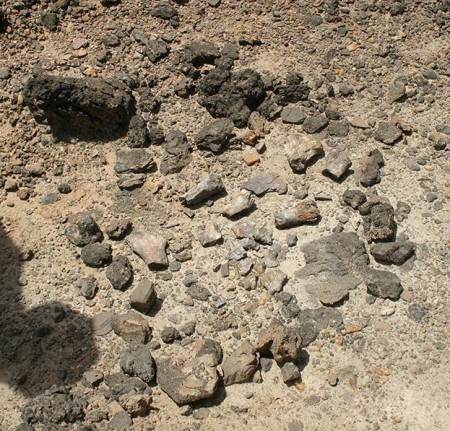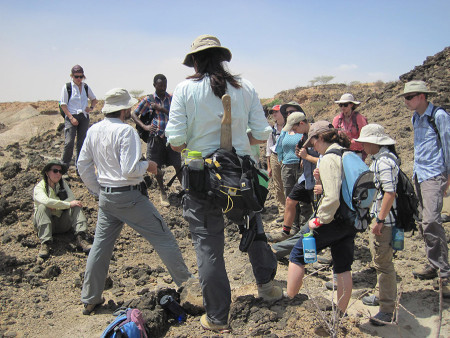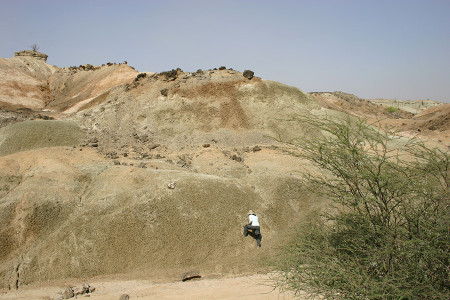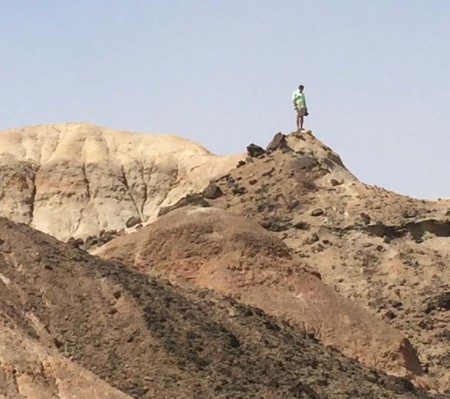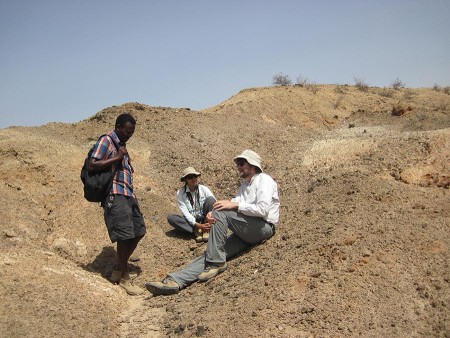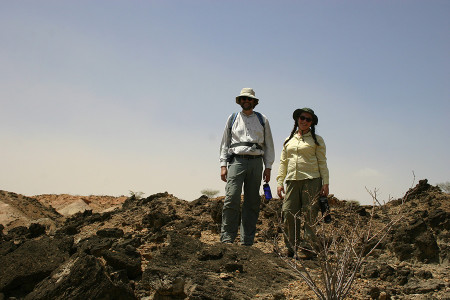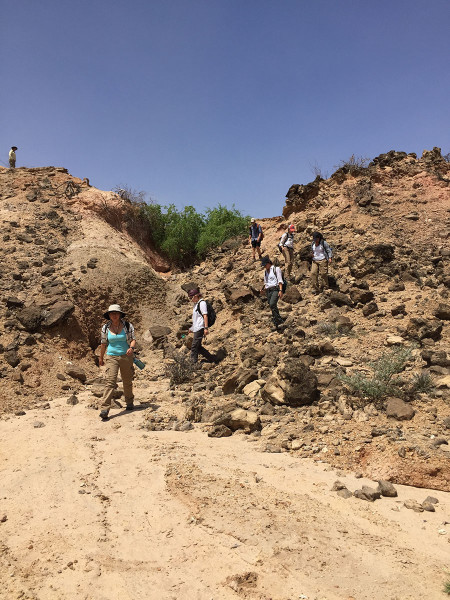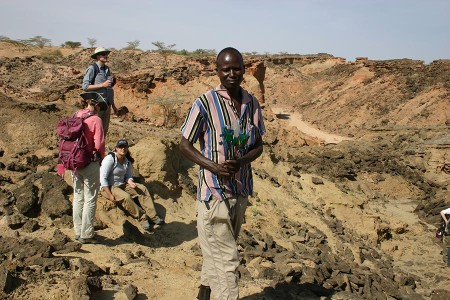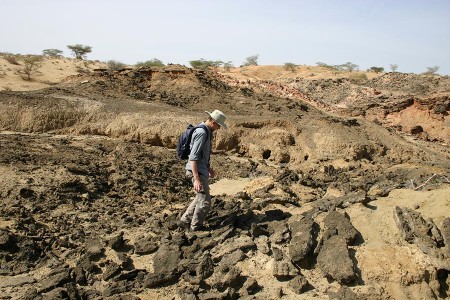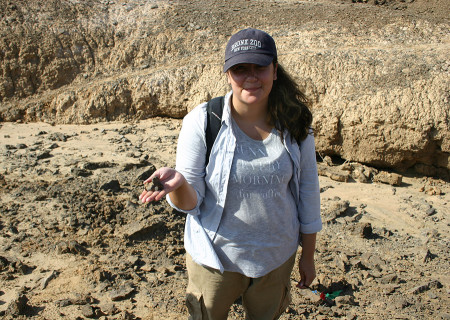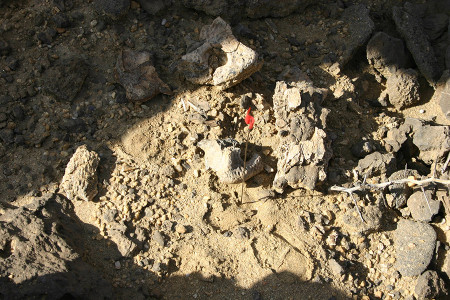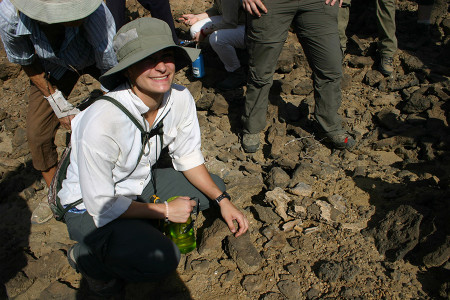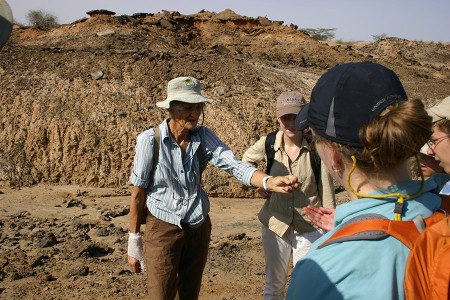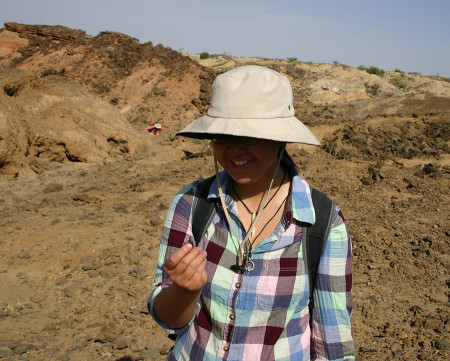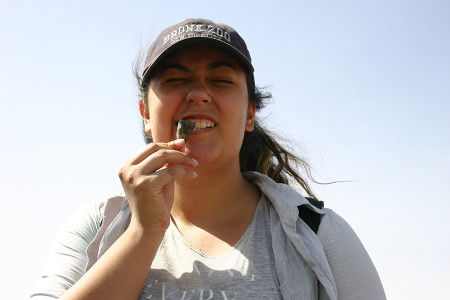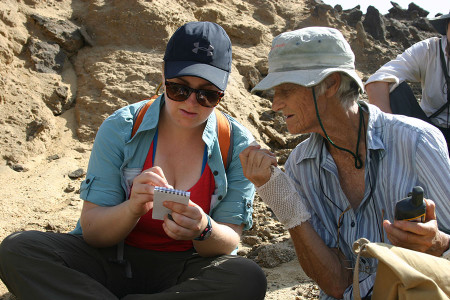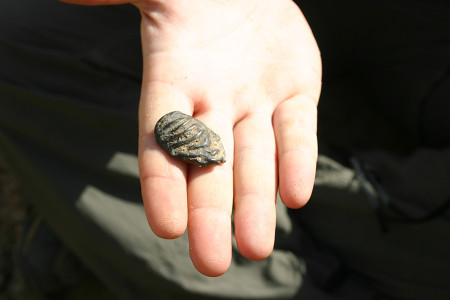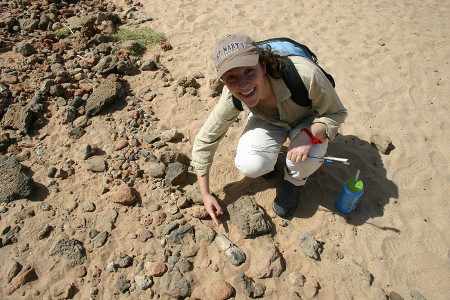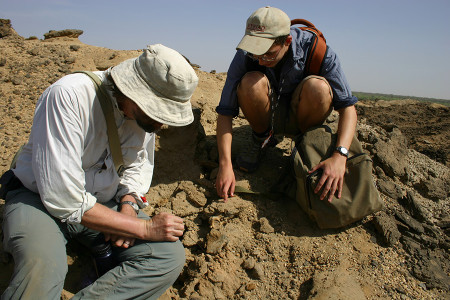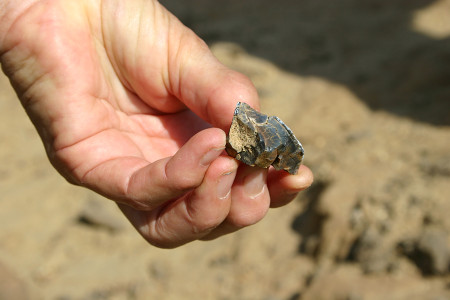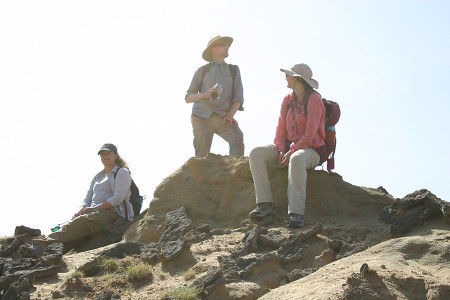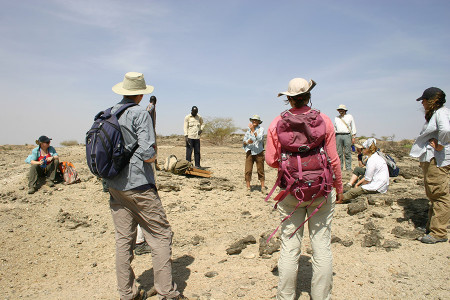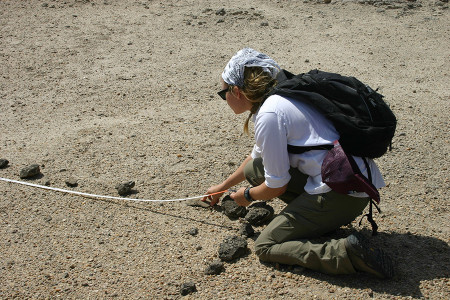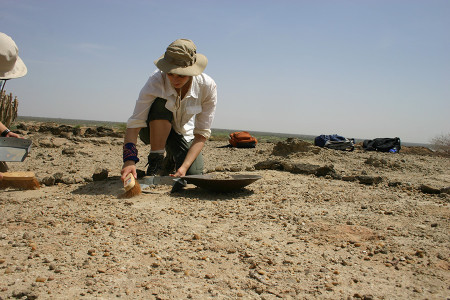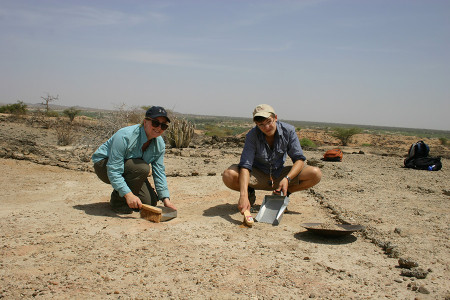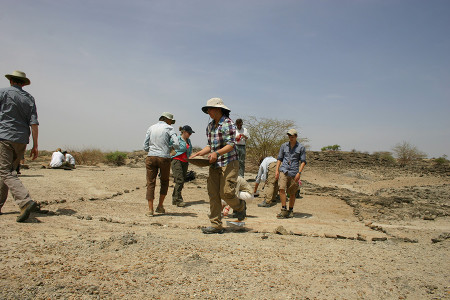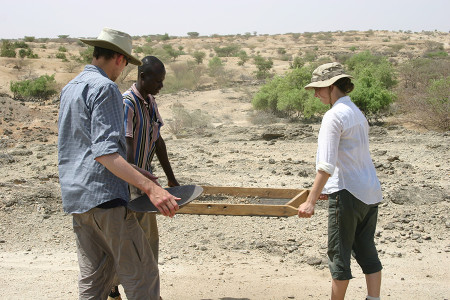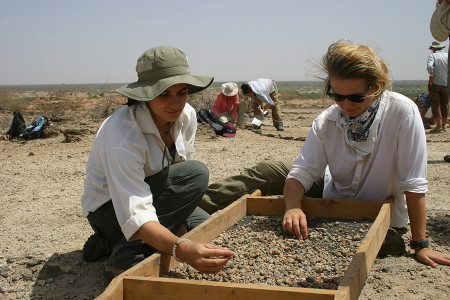In the past week, we have learned about a variety of animals* and how the habitat has changed in the ancient Turkana Basin.
*Note: There are many more species of animals (including hominins) that are still “waiting” to be unearthed and will help our understanding of life on the past landscape. In addition, not everything that has lived will enter the fossil record. For more information on how this works, check out “Getting into the Fossil Record” by UC Berkeley Museum of Paleontology.
In our search for vertebrate fossils, we focused on an area of ~ 3.6 – 3.4 Ma rock layers near the TBI facility.
DAY 2-
On our second excursion to the rock beds near TBI, we were honored to have another paleontologist with us, Dr. Meave Leakey!
We began by surveying a “new” area for fossils and placed a flag near everything we could find.
In this field area, a complete and intact fossil skeleton, limb, or skull is not a common find (more to be discussed in the geology module). Therefore, another paleontological field method is to sift through pebble size particles in an area in order to find the missing “puzzle” pieces.

